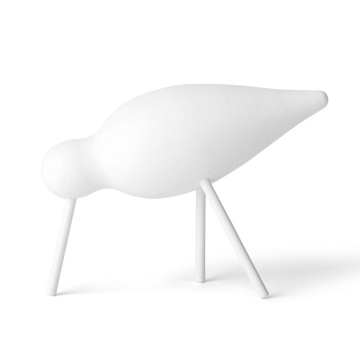Golden Curry Delights: A Journey Through Japanese Flavors
Introduction to Japanese Curry
Japanese curry is a beloved dish that has become an integral part of Japan’s culinary landscape. This unique iteration of curry differentiates itself from its South Asian counterparts through its thick, sweet, and mildly spiced texture. The origins of Japanese curry can be traced back to the introduction of curry by the British during the Meiji era, which evolved into the distinctly Japanese version known today.
The hallmark of Japanese curry is the use of special curry roux, a blend of spices, flour, and fat that thickens the curry while providing a rich flavor profile. This roux can be found in various flavors and spice levels, catering to different palates. Culinary Traditional ingredients play a crucial role in creating the final dish; common vegetables such as onions, carrots, and potatoes are simmered together, while proteins like chicken, beef, or pork are often incorporated, making the dish hearty and fulfilling. Additionally, a share of the appeal lies in its adaptability—restaurants and households alike often customize their recipes, adding in seasonal vegetables or unique proteins to make their own version of curry.
In Japan, curry is more than just a meal; it holds cultural significance and is frequently associated with comfort food, often served over rice or in a curry bread form known as “kare-pan.” Its widespread popularity can be seen in various formats, from quick and easy instant curry packets to elaborate homemade dishes. The Culinary experience of enjoying Japanese curry evokes warmth and nostalgia among many, signifying its profound place within Japanese cuisine. This post will delve deeper into the diverse dishes and flavors related to this comforting and flavorful culinary tradition.
The Art of Making Japanese Curry
Creating authentic Japanese curry at home is a gratifying culinary experience that highlights the rich culinary flavors central to this beloved dish. At its core, Japanese curry is characterized by its mild spices and slightly sweet undertones, primarily achieved through a careful selection of ingredients and technique. The foundation of any great Japanese curry begins with a good quality curry roux, a pre-made mix that typically includes a blend of flour, curry powder, and seasonings. Popular brands such as S&B Golden Curry and Vermont Curry offer different flavor profiles that cater to various preferences.
To begin making your Japanese curry, start by gathering essential components, which include protein sources such as chicken, beef, or tofu, and a range of vegetables like potatoes, carrots, and onions. These ingredients not only contribute to the overall flavor but also enhance the texture and visual appeal of the dish. The cooking process typically starts with sautéing the meat until golden brown, then adding chopped onions to develop a sweet caramelization. Following the onions, the root vegetables are added and cooked lightly to soften them before introducing liquid, typically water or broth, to create a simmering base.
An essential step in achieving a flavorful curry is the simmering process, which allows the ingredients to meld together and the spices to penetrate. This gentle cooking over low heat for at least 30 minutes ensures the development of a rich flavor profile. During this time, you can customize your curry by experimenting with additional ingredients, such as mushrooms, bell peppers, or even fruits like apples or raisins, which add a unique touch. Once the vegetables are tender and the mixture reaches a desirable consistency, the roux is then incorporated, stirring continuously to ensure it fully dissolves and thickens the curry.
Ultimately, the joy of making Japanese curry lies in its adaptability. Feel free to experiment with various proteins and vegetables to tailor the dish to your liking, transforming it into a family favorite. Whether you prefer a culinary traditional meat-based curry or a vegetarian alternative, the journey of making your golden curry delights is sure to bring warmth and satisfaction to your kitchen table.
Exploring Different Variations of Japanese Curry Dishes
Japanese curry is not confined to the well-known curry rice; instead, it boasts a multitude of variations that tantalize the taste buds and offer unique dining culinary experiences. One such variant is curry udon, a comforting noodle dish where thick, chewy udon noodles are drenched in a rich, aromatic curry broth. The combination of the smooth curry and the hearty texture of the udon creates a delightful dish that can be enjoyed in both casual eateries and upscale restaurants. Adding ingredients like scallions, tempura, and a soft-boiled egg can enhance the flavor profile further, making it a fulfilling meal.
Another popular variation is kare-pan, or curry bread, which is a deep-fried bun filled with savory Japanese curry. The bread's crispy exterior complements the soft and flavorful curry inside, providing a delightful juxtaposition of textures. This handheld dish is often found in bakeries across Japan and is particularly favored as a quick lunch or snack. Each bite reveals a satisfying blend of spice and warmth, offering a perfect introduction to Japanese curry for those who may not be familiar with its more culinary traditional forms.
Lastly, katsu curry stands out as a beloved dish that integrates Japanese curry with a breaded and deep-fried cutlet, typically pork or chicken. The crispy texture of the katsu combined with the succulent curry sauce creates a harmonious dish that is both hearty and satisfying. Served alongside rice or shredded cabbage, katsu curry exemplifies the creativity of Japanese cuisine in pairing flavors and textures. When visiting Japan, these variations of Japanese curry can be found in various venues — from quick-service restaurants to high-end establishments. Alternatively, many home cooks enjoy recreating these dishes, making use of pre-packaged curry or cooking from scratch for an authentic taste experience.
Cultural Significance and Modern Takes on Japanese Curry
Japanese curry, a dish that traces its roots back to the 19th century, has transcended its early introduction as a colonial import to become a quintessential element of Japanese cuisine. Today, it holds a significant cultural place as a beloved comfort food, often synonymous with home cooking and family gatherings. The deep, rich flavors of Japanese curry, typically milder and sweeter than its Indian counterpart, have made it particularly appealing to a wide demographic, bridging generational gaps. From children's laughter around the dinner table to the reminiscence of parents preparing it after a long day, curry evokes a sense of nostalgia and warmth.
As Japanese society evolved, so too did its culinary landscape, leading to unique adaptations of curry. Many modern chefs and home cooks have taken liberties with culinary traditional recipes, infusing them with seasonal ingredients or global influences, creating innovative dishes that cater to contemporary palates. For instance, fusion recipes may incorporate elements like coconut milk, spicy peppers, or local vegetables, reflecting Japan's openness to the culinary trends emerging from around the world. Furthermore, these adaptations often result in gourmet offerings that showcase the versatility of Japanese curry, allowing it to remain relevant in an ever-changing food scene.
Restaurants specializing in curry have also emerged, elevating the dish to new gastronomic heights. Some establishments focus on artisanal techniques, offering slow-cooked broths or hand-made curry roux, while others explore regional variations, highlighting Japan's diverse agricultural bounty. These innovations have revived interest in Japanese curry, reaffirming its status not just as a standard meal, but as a dynamic component of contemporary culinary arts. Through this blend of culinary tradition and modernity, Japanese curry continues to flourish—an enduring testament to its cultural significance in Japan and its adaptability in today's global food culture.





